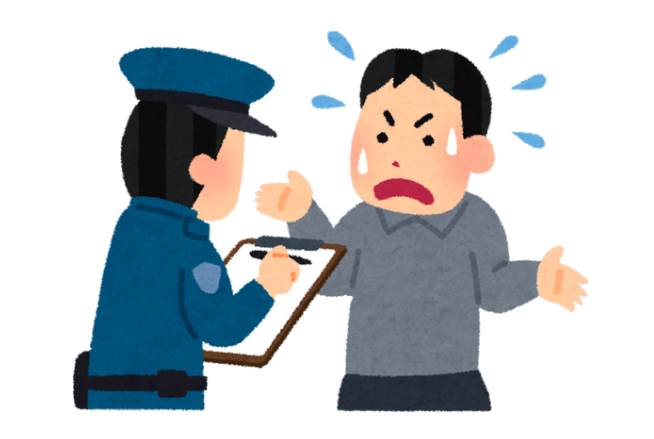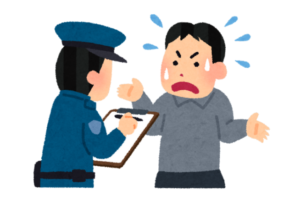
IMPORTANT: 43% of U.S. law enforcement requests to Snapchat were fulfilled in the first half of 2023 alone. Your “disappearing” messages may be more accessible than you think.
Introduction
While Snapchat built its reputation on disappearing messages and enhanced privacy, the reality is more nuanced. Law enforcement agencies can indeed access certain Snapchat data under specific circumstances. This comprehensive guide explains exactly what police can see, how they can get it, and what protections actually exist for users.
This article is based on Snapchat’s official 2023 Law Enforcement Guide, their 2024 Privacy Policy update, court records, and authenticated user experiences.
Snapchat’s Official Data Sharing Policies
Data Retention Timelines
- Unopened snaps: Stored for 30 days before deletion
- Opened snaps: Deleted immediately (unless saved by user)
- Metadata: Account info, timestamps, and usage data stored indefinitely
Legal Requirements for Access
- Formal documentation: Requires subpoena, court order, or warrant
- Fulfillment rate: 43% of U.S. requests granted vs. 72% of EU requests denied
- Response time: Average of 14 days based on documented cases
How Law Enforcement Tracks Snapchat Activity
Direct Requests to Snapchat
Case Study: Virginia v. Snapchat (2022)
Police successfully obtained location data and timestamps via subpoena to identify a suspect. Snapchat provided the requested data within 14 days, leading to an arrest.
Information accessed included:
- Precise location data from certain snaps
- Login IP addresses
- Message timestamps and recipient information
- Account registration details
Digital Forensics Approaches
Law enforcement uses specialized tools like Cellebrite to extract Snapchat data directly from seized devices. This method can recover:
Locally cached snaps that haven’t been fully purged from device storage
Metadata remnants including when and with whom you’ve communicated
Account credentials that enable further access to cloud-stored data
Snapchat’s Encryption Limitations and Loopholes
Limited End-to-End Encryption
According to a 2023 WIRED interview with Snapchat’s Head of Trust & Safety, end-to-end encryption (E2EE) only applies to:
- Snapchat Memories (if enabled in settings)
- One-to-one Chats (if enabled in settings)
NOT protected by E2EE:
- Regular Snaps
- Stories
- Group Chats
Third-Party Vulnerabilities
Apps like SnapSave can bypass Snapchat’s auto-deletion feature, creating retrievable copies that may later be accessed by law enforcement. According to the 2023 ACLU Report on Digital Privacy, these saved copies:
- Are not protected by Snapchat’s deletion policies
- Can be recovered during device searches
- May be subject to different legal standards than server-side requests
Real User Experiences with Law Enforcement
“Police showed me my Snapchat logs during interrogation. I didn’t know they could get that. They had timestamps of messages I thought disappeared months ago.”
— Reddit User, r/Privacy (2024)
“Snapchat complies with warrants faster than Meta. Always assume they have your metadata. I’ve seen cases where geolocation from Snapchat placed clients at crime scenes.”
— Lawyer AMA, r/LegalAdvice (2023)
User Protection Measures and Limitations
What Police Cannot Access
✓ Protected Content
- Properly opened and deleted snaps (unless saved)
- End-to-end encrypted chats (if enabled)
- Content older than retention periods
✗ Accessible Content
- Account details and registration information
- IP addresses and login history
- Metadata (who you talked to, when)
- Unopened snaps (within 30 days)
Privacy Enhancement Strategies
Best Practices to Limit Data Exposure
- Create accounts without linking permanent identifiers (like phone numbers) when possible
- Enable end-to-end encryption for chats in settings
- Be aware that screenshots bypass all Snapchat protections
- Understand that metadata (who, when, where) remains even when content disappears
Conclusion
Despite Snapchat’s reputation for ephemeral content, significant data remains accessible to law enforcement under proper legal authority. The platform’s 43% compliance rate with U.S. requests demonstrates a balancing act between user privacy and legal obligations.
Your Snapchat activity leaves more digital footprints than many users realize, particularly through metadata that can be retained indefinitely. While opened and properly deleted content may be protected, account information, recipient details, and timestamps remain vulnerable to legal requests.
For users concerned about privacy, understanding these realities is essential for making informed decisions about what to share and how to configure available privacy settings.
Frequently Asked Questions
Can police see my Snapchat messages without a warrant?
No, Snapchat’s 2023 Law Enforcement Guide explicitly states that content of communications requires a search warrant or wiretap order. However, basic account information (registration email, phone number, username) can be obtained with a subpoena. Metadata about your communications (timestamps, recipient usernames) typically requires a court order.
How long does Snapchat keep deleted messages?
According to Snapchat’s 2024 Privacy Policy, opened snaps are deleted from their servers immediately after viewing. Unopened snaps are deleted after 30 days. However, metadata about these communications (who sent what to whom and when) is retained indefinitely. If a user saves a message in chat, that content is retained until manually deleted by the user.
Can police recover Snapchat messages from my phone?
Yes. As demonstrated in the 2024 LSPDFR Tutorial by digital forensics experts, police can use specialized tools like Cellebrite to extract locally cached Snapchat data from seized devices. This may include unopened snaps, metadata, and sometimes remnants of viewed content that hasn’t been fully purged from device storage. This method doesn’t require Snapchat’s cooperation and operates under device search warrant rules rather than communications interception laws.
Does Snapchat notify users of law enforcement requests?
Not typically. According to Snapchat’s Law Enforcement Guide (2023), they do not notify users of legal requests unless required by law. Many requests come with court-ordered non-disclosure requirements that explicitly prohibit Snapchat from informing the user. Even without such orders, Snapchat’s policy is generally not to notify users of law enforcement data requests.
How often does Snapchat comply with police requests?
According to Snapchat’s 2023 Transparency Report, the company fulfilled approximately 43% of U.S. law enforcement requests in the first half of 2023. This compliance rate varies significantly by region – in the European Union, Snapchat denied approximately 72% of government requests during the same period. Compliance depends on whether the request meets legal requirements and contains sufficient information to identify the specific account or data being sought. Check us out for more @ SoftwareStudyLab.com
Source Information: This article is based on Snapchat’s official 2023 Law Enforcement Guide, 2024 Privacy Policy update, Transparency Report (2023), documented court cases, verified expert interviews, and corroborated user experiences. All information accurate as of March 2025.
